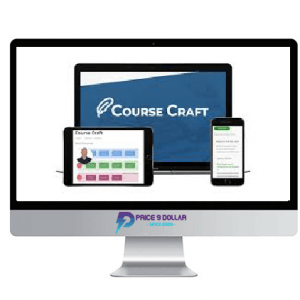[Special Offer] Sean D’Souza Psychotactics – Dartboard Pricing
$49.95 $24.00
Sale Page: https://www.psychotactics.com/products/trust-the-chef/
Delivery: Within 3-7 days
Description
Sean D’Souza Psychotactics – Dartboard Pricing
A series of three books that show you how to increase prices, use the yes-yes system and why sequential pricing matters
Book 1: The Psychology of Pricing
A Systematic Method To Increase Prices (Without Losing Clients)
In this book, we’re going to take a journey into the psychology of pricing, and then learn how to use a system to increase prices. We finally look at three core strategies that not only help the client buy more but stay with you longer—and at higher prices.
In this 52-page book you will learn:
- The case for increasing prices and why cheaper prices drive clients away in the long run.
- Will this pricing model for me? (How the strategy works for products, services or courses).
- The power of the Dartboard experiment—and how to price a new product or service.
- The “three gorillas” that most people miss—and why it’s so hard to increase prices without these “three gorillas” in place.
But is there a system that you can just “cut and paste”? Why yes, there is, and it’s called the Yes-Yes System.
Book 2: Increasing Prices
How to Use the Power of the Yes-Yes System
Have you noticed how you buy a product or service? In most cases, you look at what’s being offered and then look around for a better price, or at least better value. This behaviour means you’re not just considering one brand, but also working out what that brand’s competition is offering. The Yes-Yes gets rid of the competition once and for all.
Instead of your client comparing between you and the competition, they compare two prices: your regular price and the premium price. The client no longer heads away but is fixated on getting the premium offer. But what causes the client to behave in this seemingly irrational behaviour?
Why do they completely ignore the competition? Aha, you’re just about to discover the power of the Yes-Yes system.
In this 49-page book you will learn:
- Why you should provide only two buying choices for your product (never more!)
- Why 98% of clients pick the higher priced product or service (even when offered a lower price).
- Why the bonus is more important than the product or service itself (This logic makes no sense, but it works).
- Why you need to “copy” the price grid (and how any unwanted creativity will get clients to go elsewhere). This grid has been tested to perfection and in companies all over the world. It’s perfect—there’s no need to tweak it and really, you shouldn’t.
Which takes us to Book 3.
Book 3: Sequential Pricing
The Magic of Sequences (And Why They Transform A Business)
When a customer comes to your sales page, they’re faced with a range of products or services. How is the customer supposed to know where to start? The answer lies in Karate. If you’re a white belt, what comes next? If you’re a yellow belt, what comes next? Life is full of examples of sequences, where we know where we are, and where to go next.
But what if you have a ton of existing product or services? How do you string seemingly unrelated products and services together? Or let’s say you’re just starting out; how do you design a sequence that clients will follow (just like a karate sequence)?
That’s the magic of Sequential Pricing—which by the way, is the coolest book in this series.
In this in this 44-page book you will learn
- How to create amazingly powerful sequences with your products/services (clients actually follow this sequence).
- How to take clients from small products/services to higher prices—and then back down again (just like going from starters to mains—and back to dessert)
- Why you should avoid discounting completely—and what to do instead.
Sale Page: Sean D’Souza Psychotactics – Dartboard Pricing
Delivery Policy
When will I receive my course?
You will receive a link to download your course immediately or within 1 to 21 days. It depends on the product you buy, so please read the short description of the product carefully before making a purchase.
How is my course delivered?
We share courses through Google Drive, so once your order is complete, you'll receive an invitation to view the course in your email.
To avoid any delay in delivery, please provide a Google mail and enter your email address correctly in the Checkout Page.
In case you submit a wrong email address, please contact us to resend the course to the correct email.
How do I check status of my order?
Please log in to Price9Dollar account then go to Order Page. You will find all your orders includes number, date, status and total price.
If the status is Processing: Your course is being uploaded. Please be patient and wait for us to complete your order. If your order has multiple courses and one of them has not been updated with the download link, the status of the order is also Processing.
If the status is Completed: Your course is ready for immediate download. Click "VIEW" to view details and download the course.
Where can I find my course?
Once your order is complete, a link to download the course will automatically be sent to your email.
You can also get the download link by logging into your Price9Dollar account then going to Downloads Page.



![[Special Offer] Sean D’Souza Psychotactics – Dartboard Pricing 3](https://i.imgur.com/xMlTEu6.gif)





